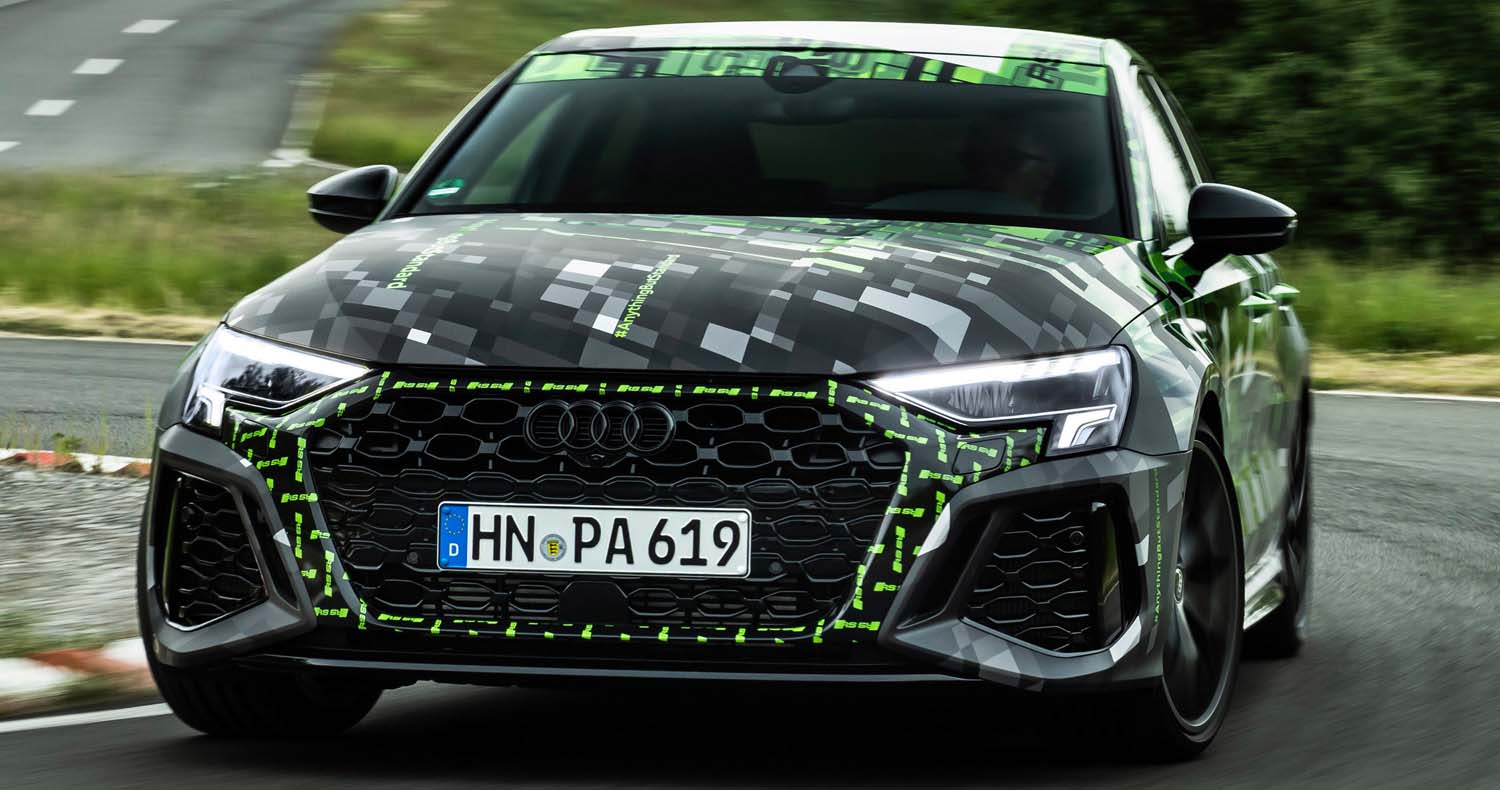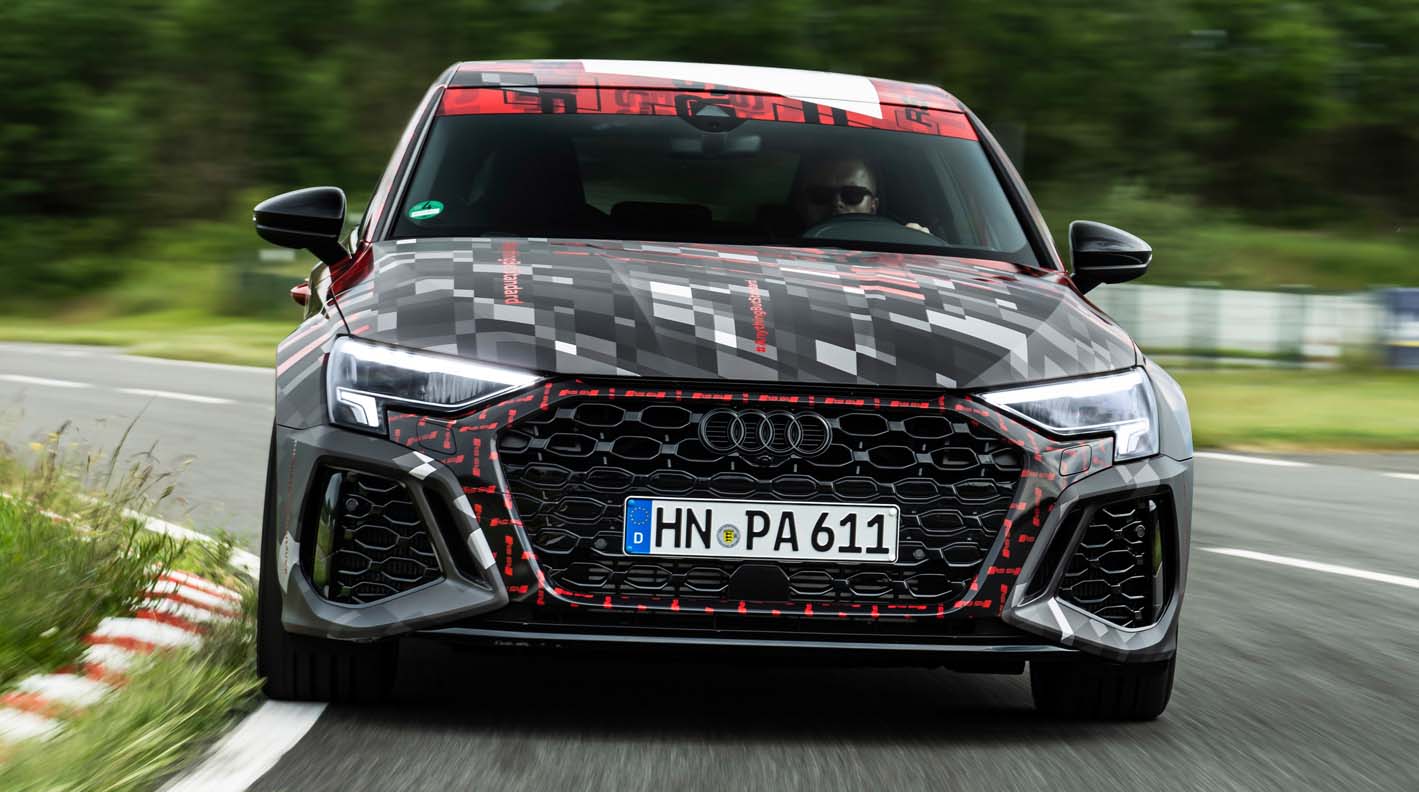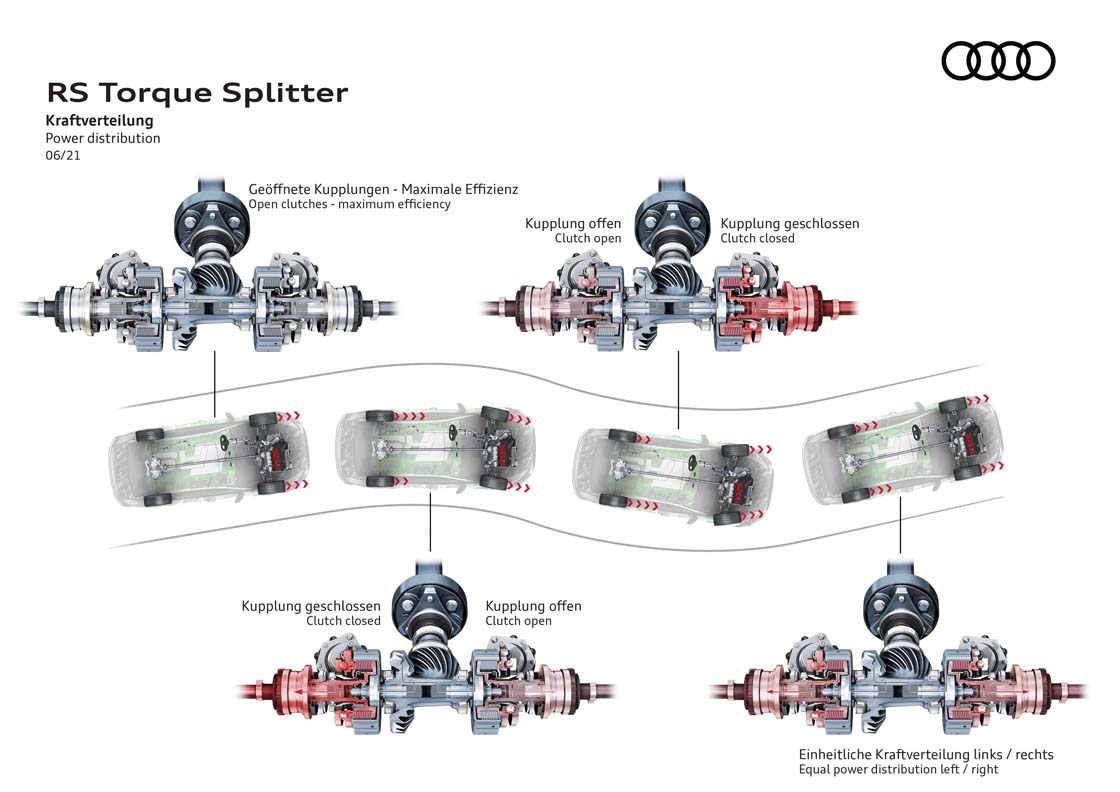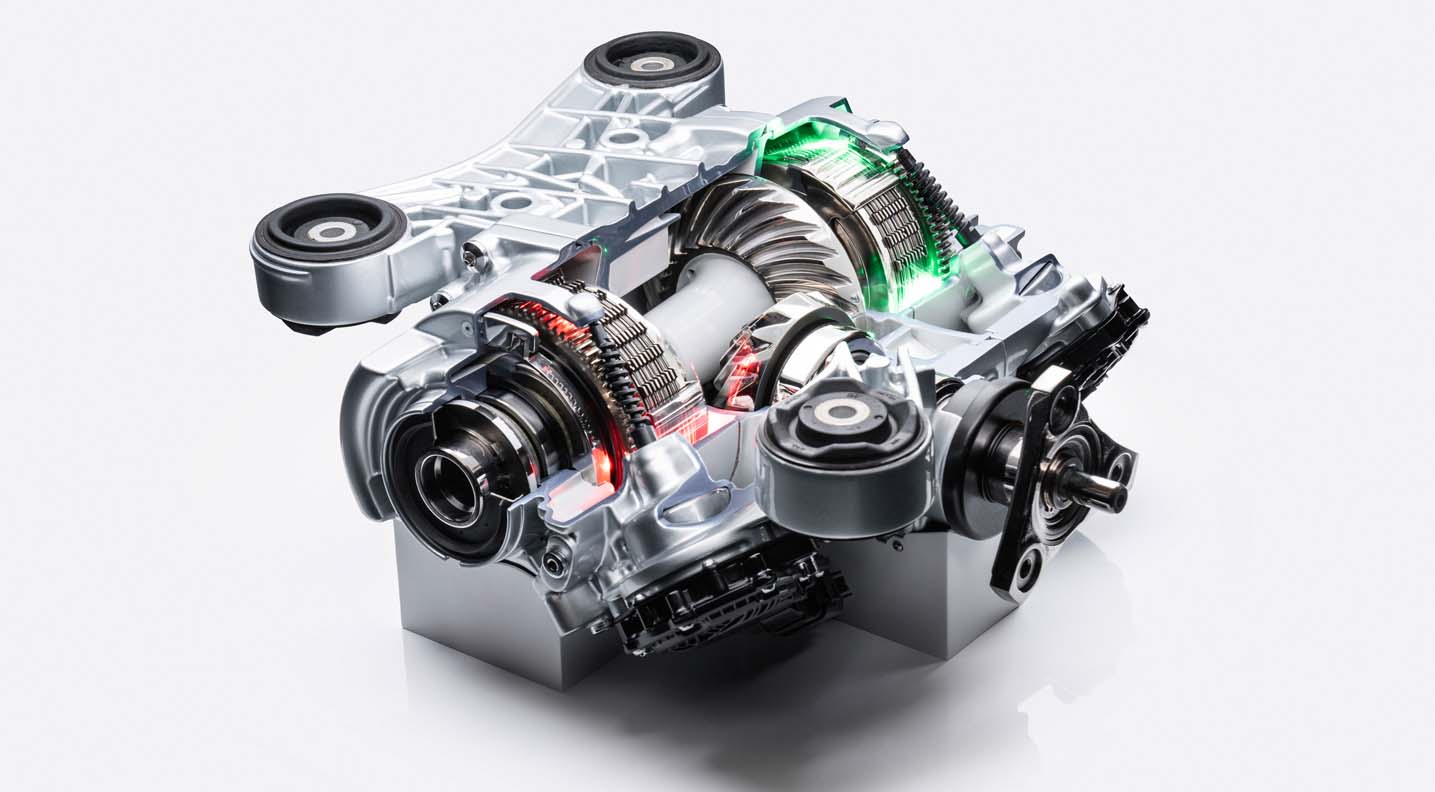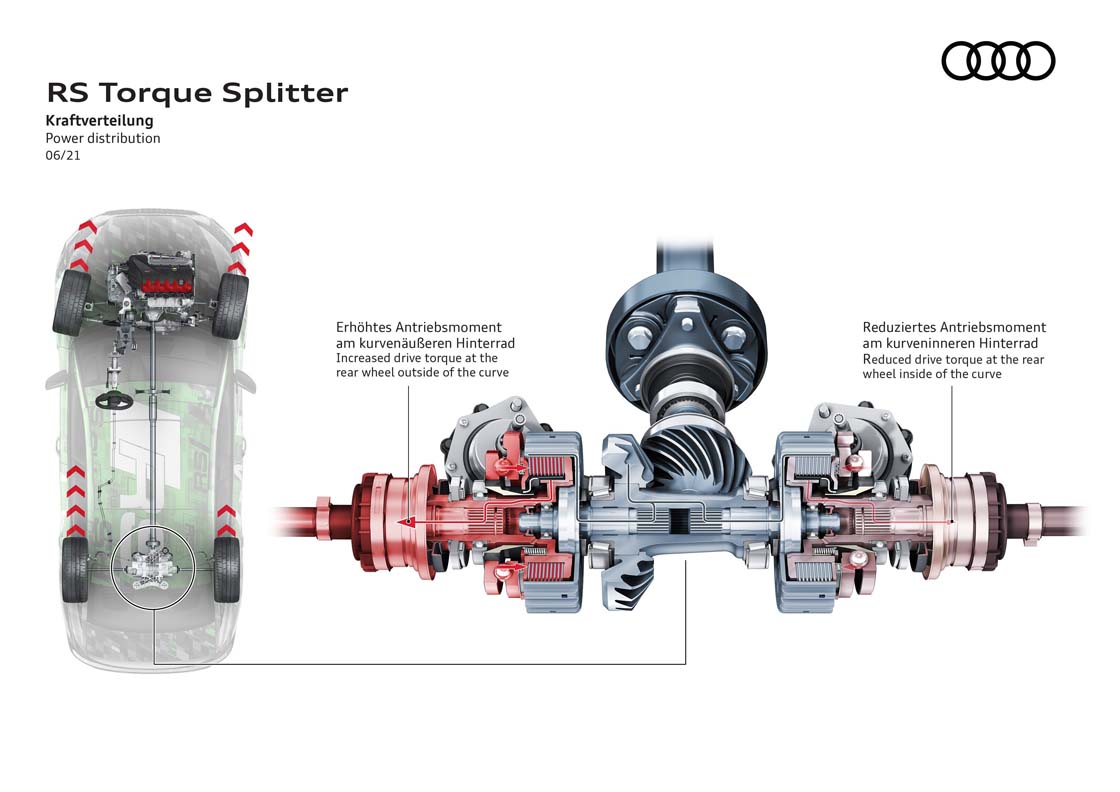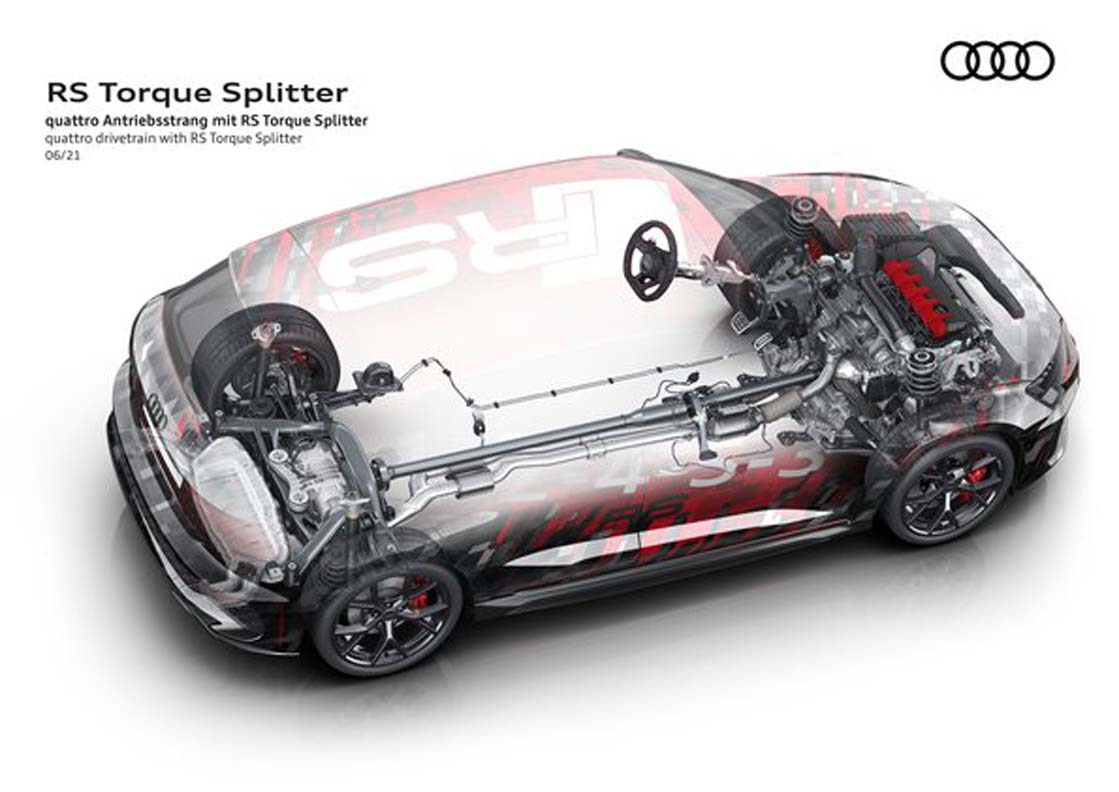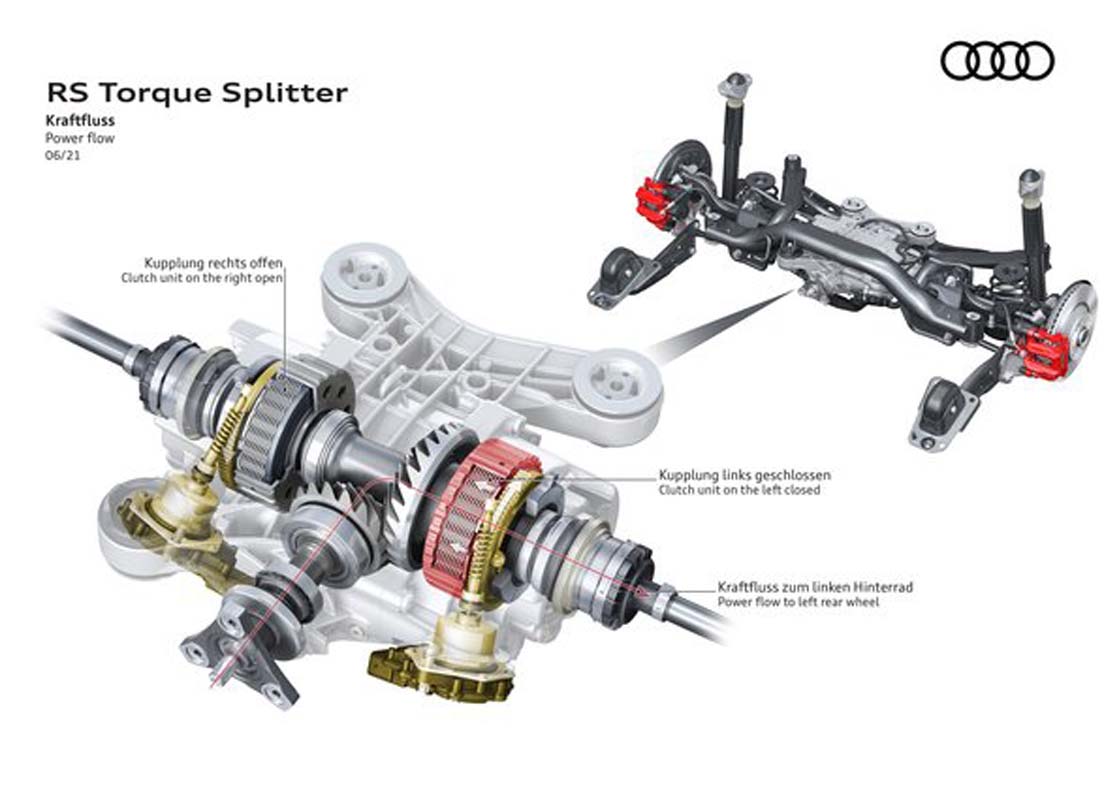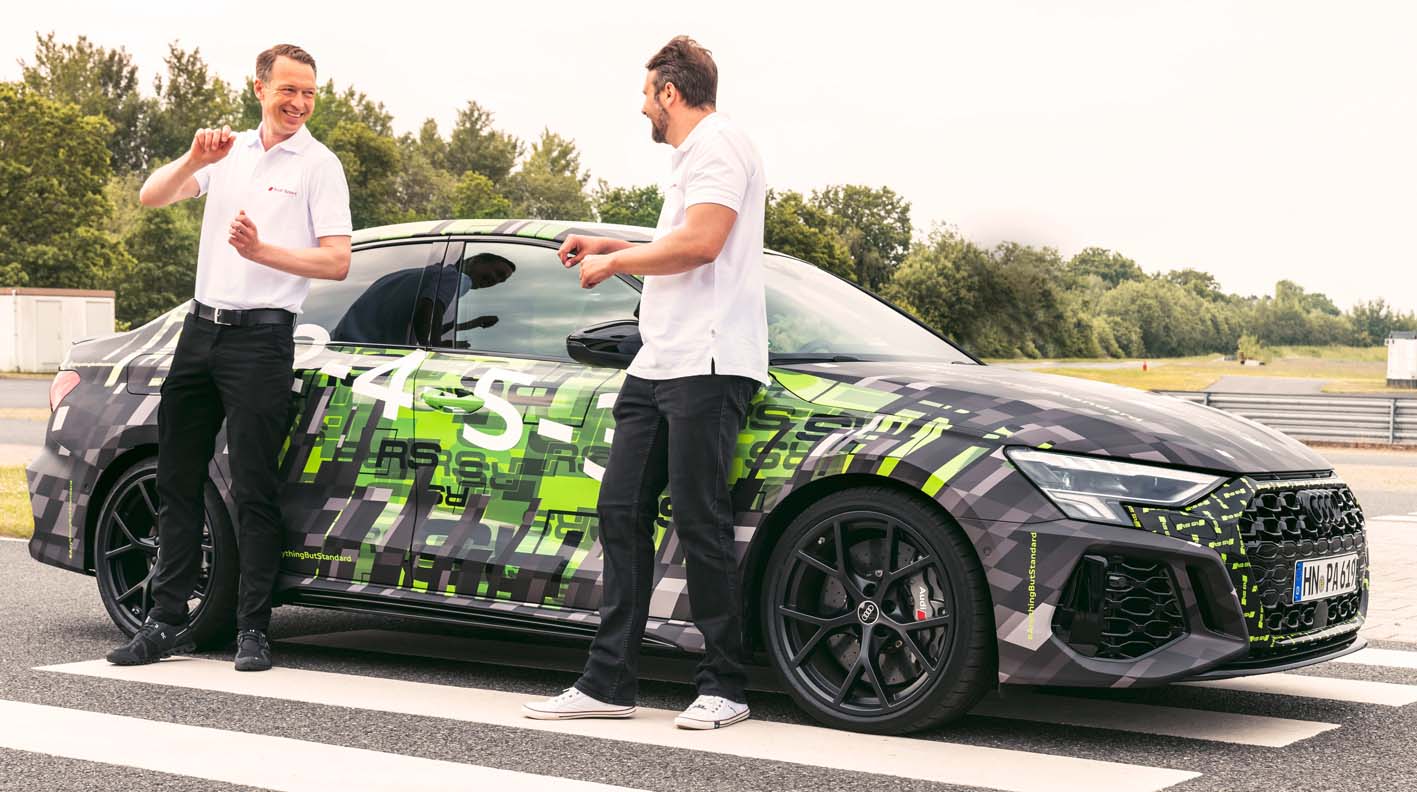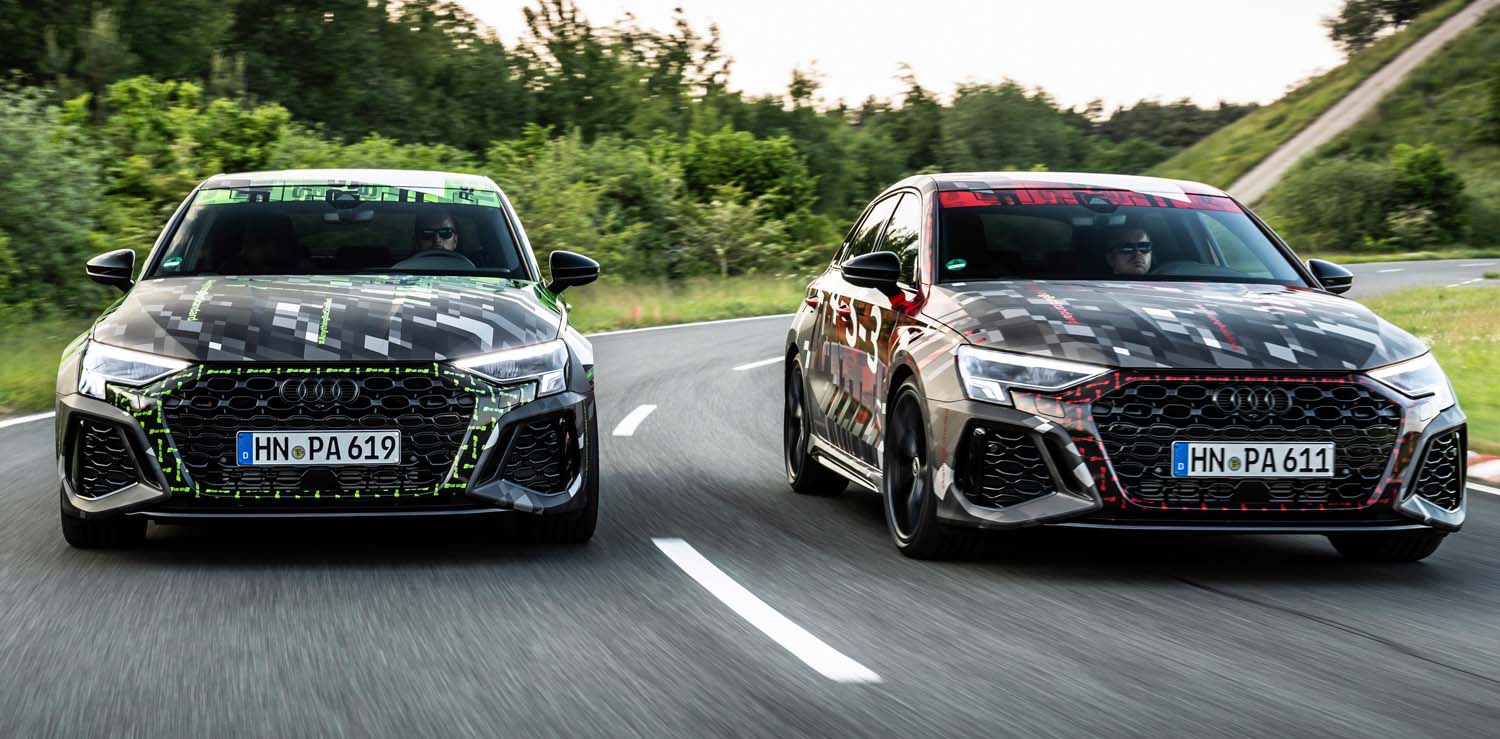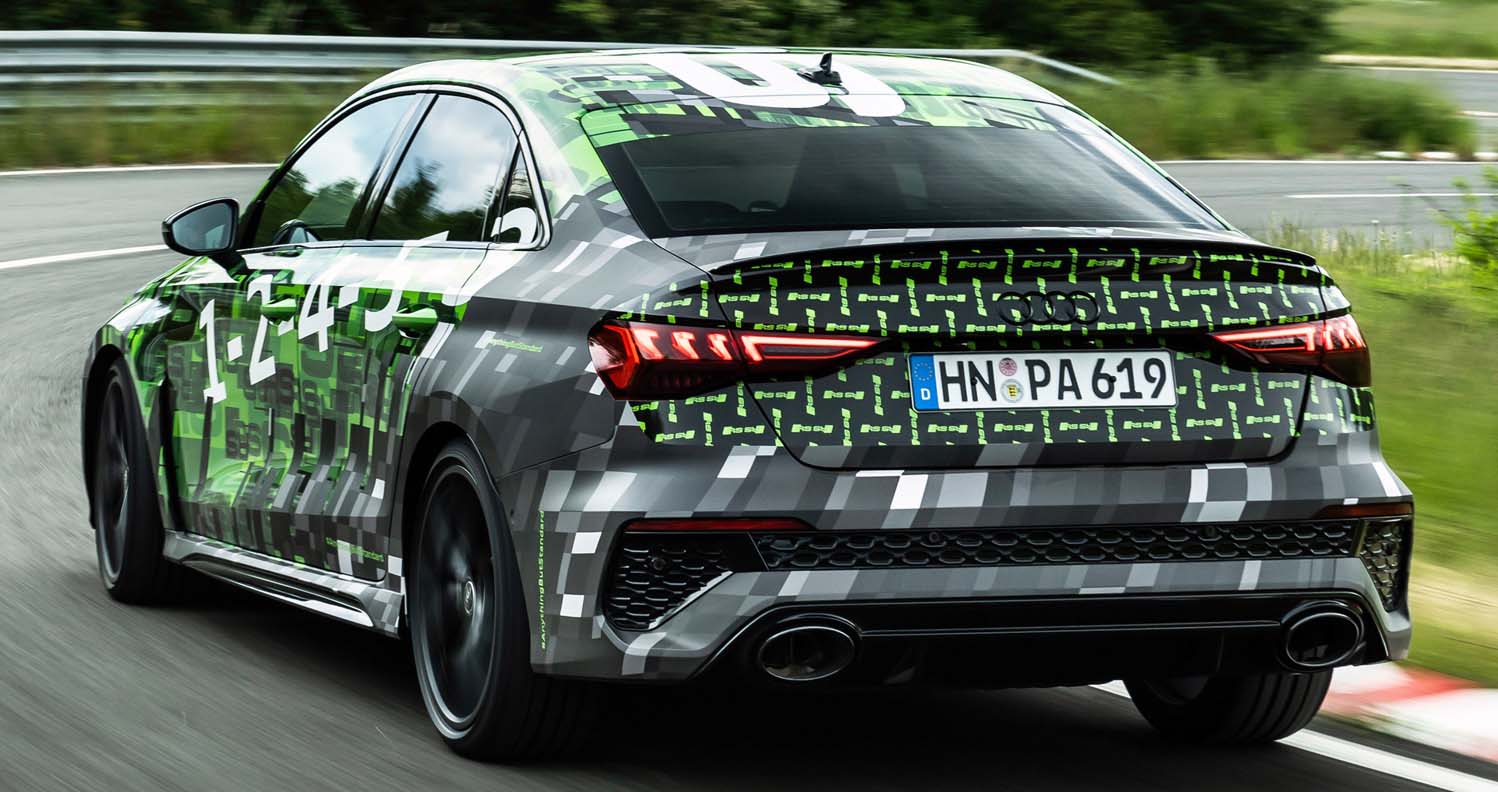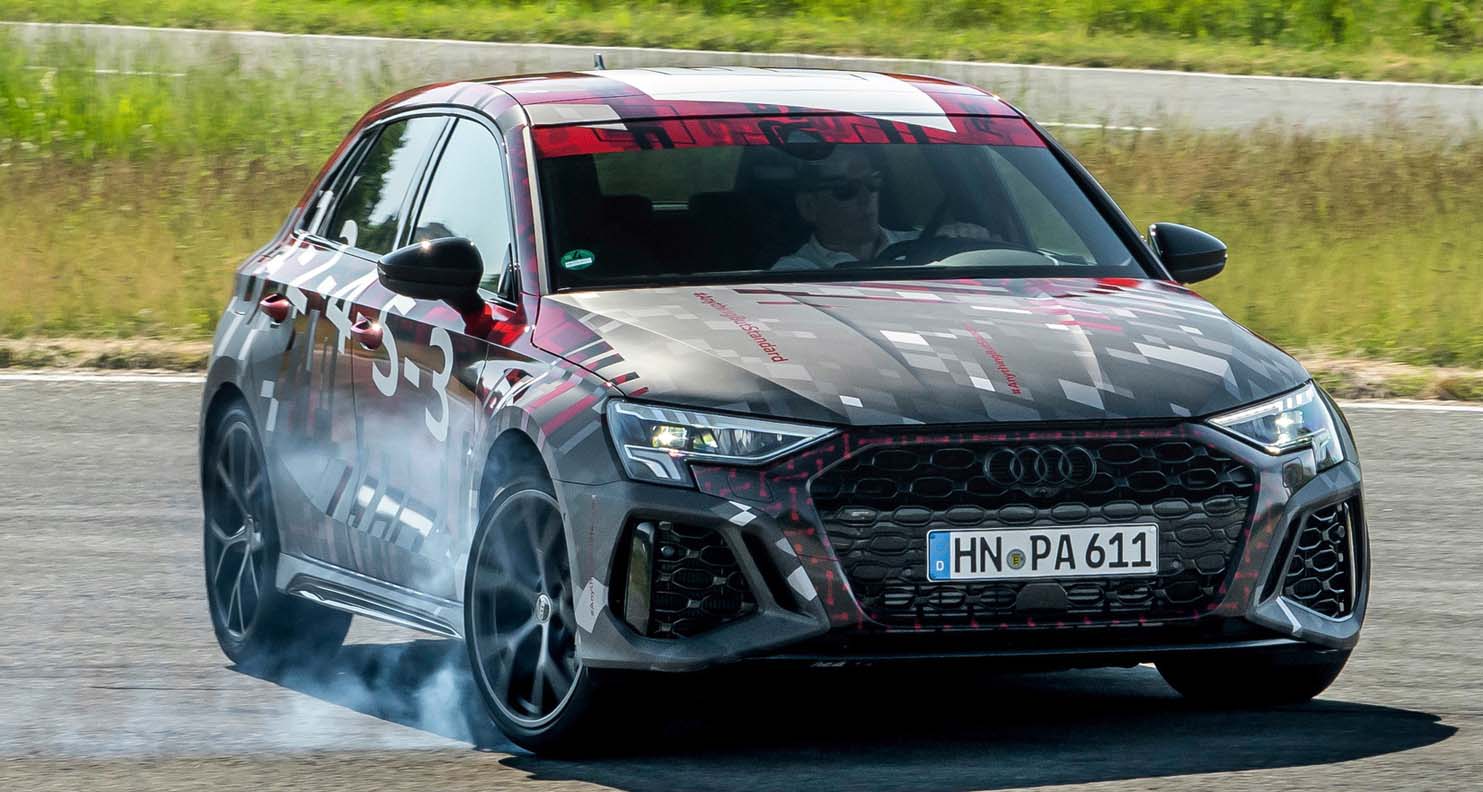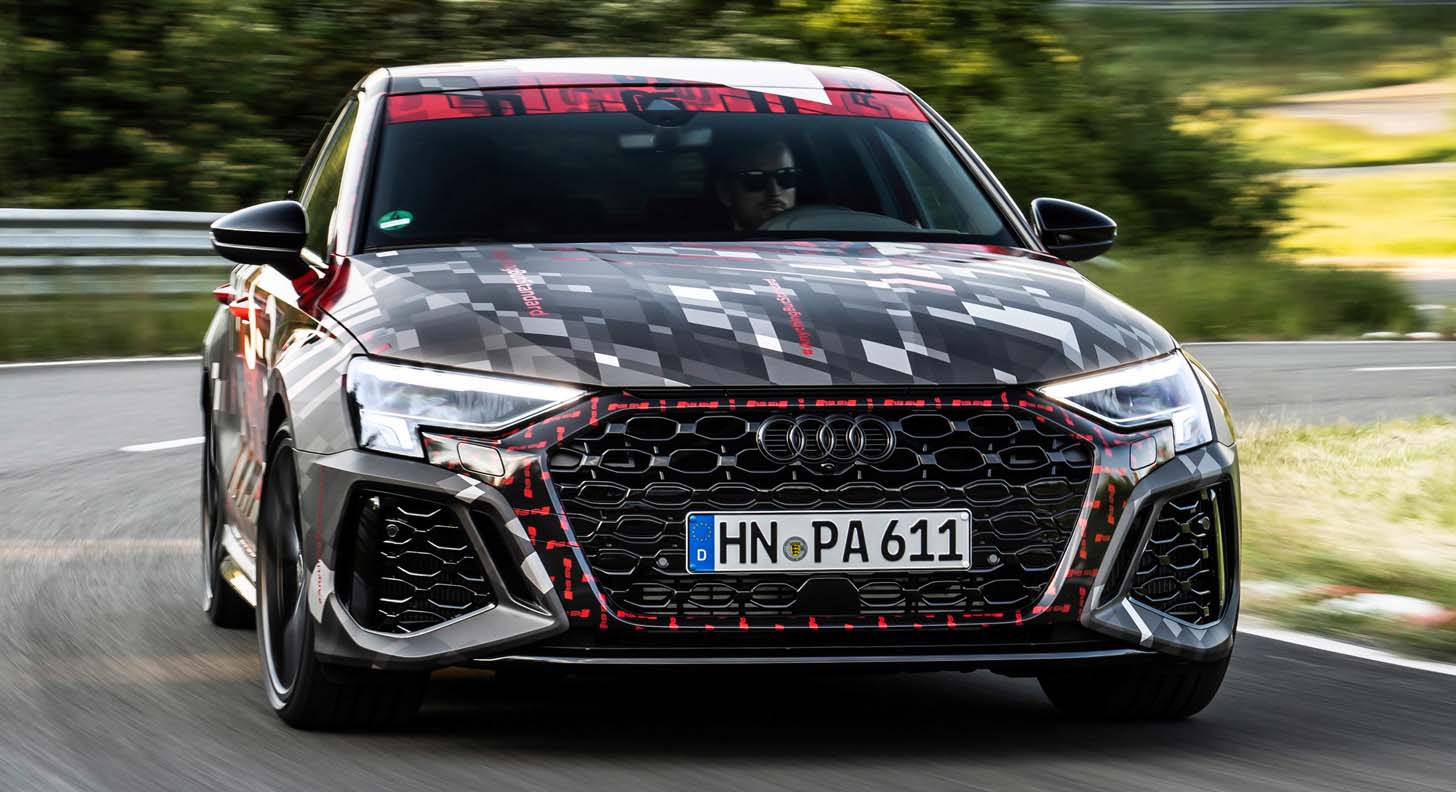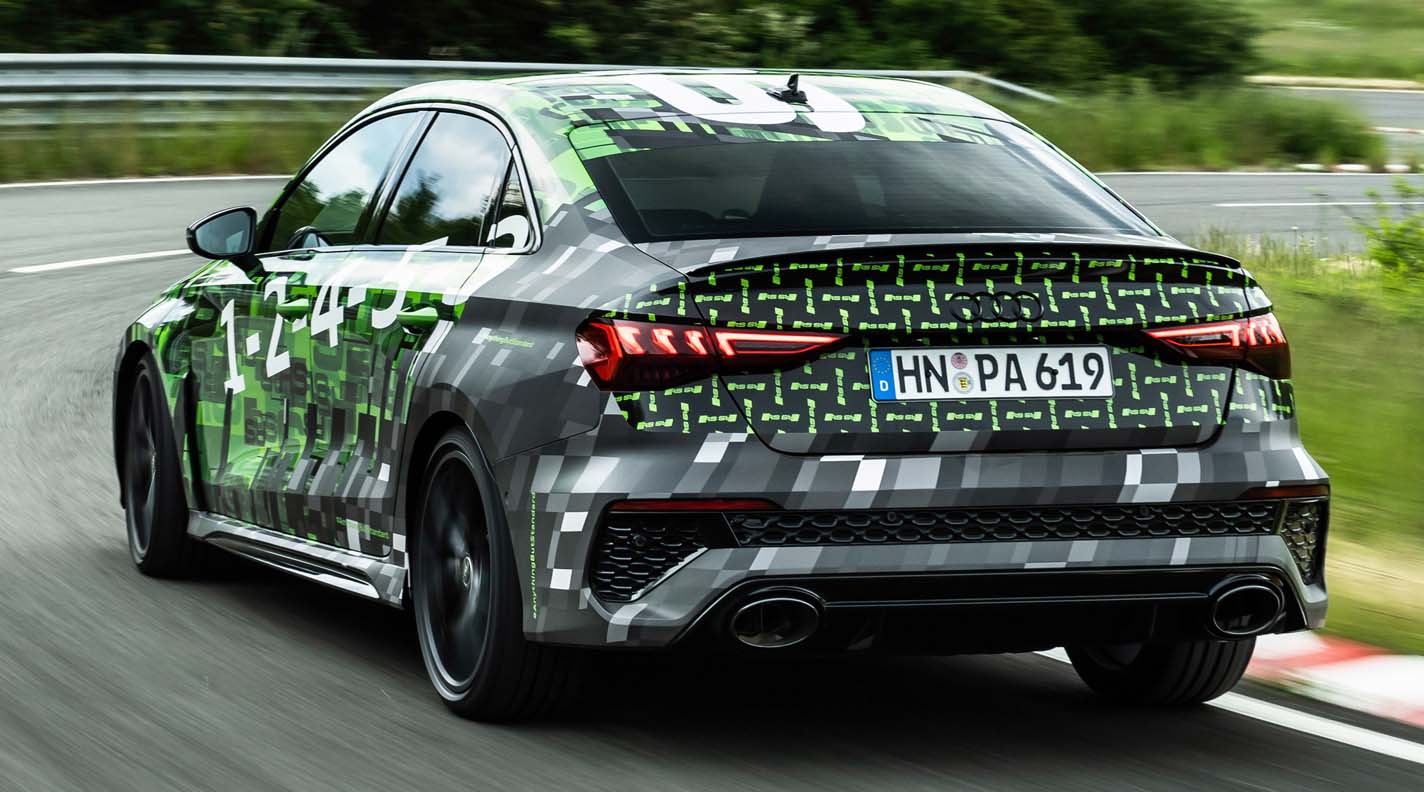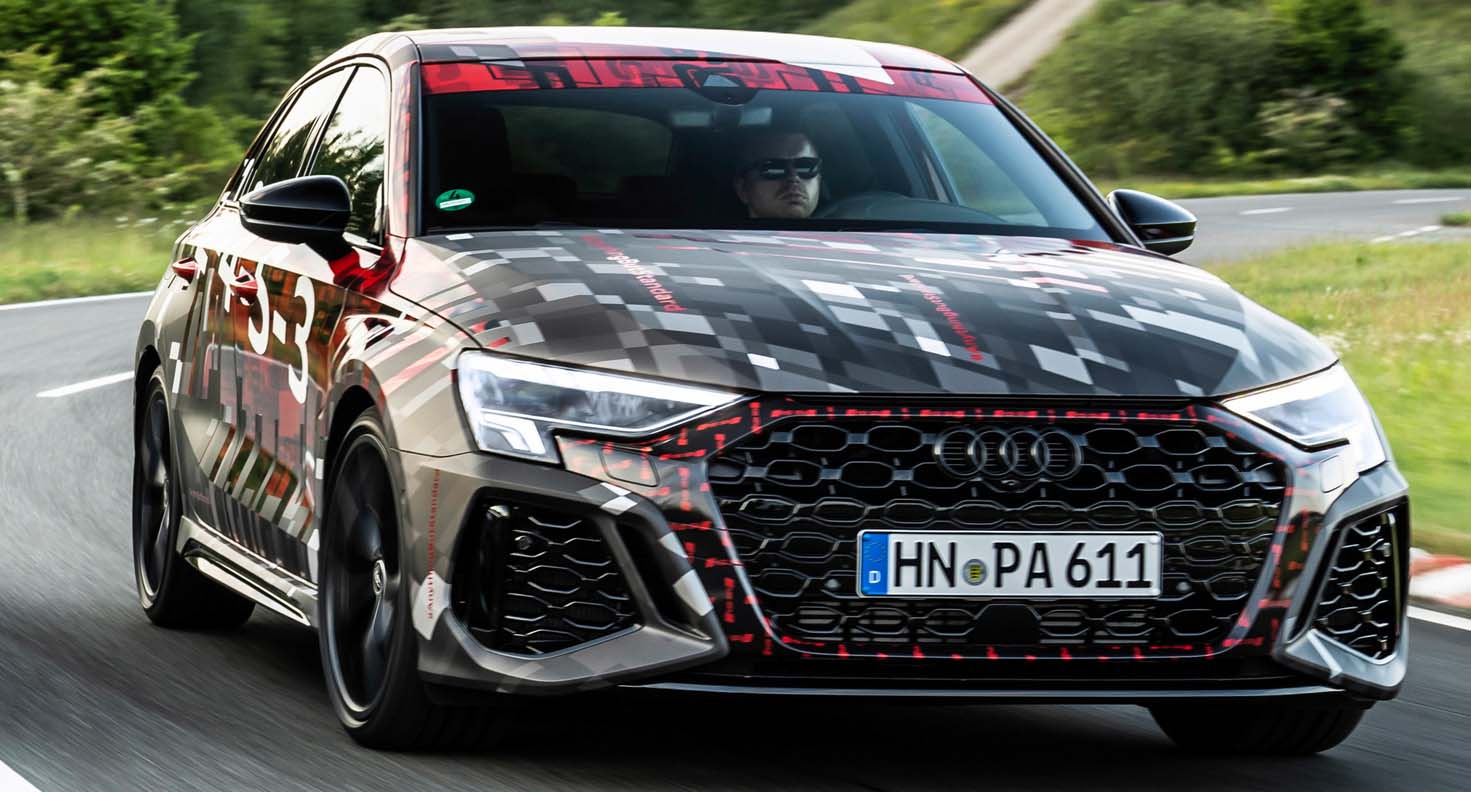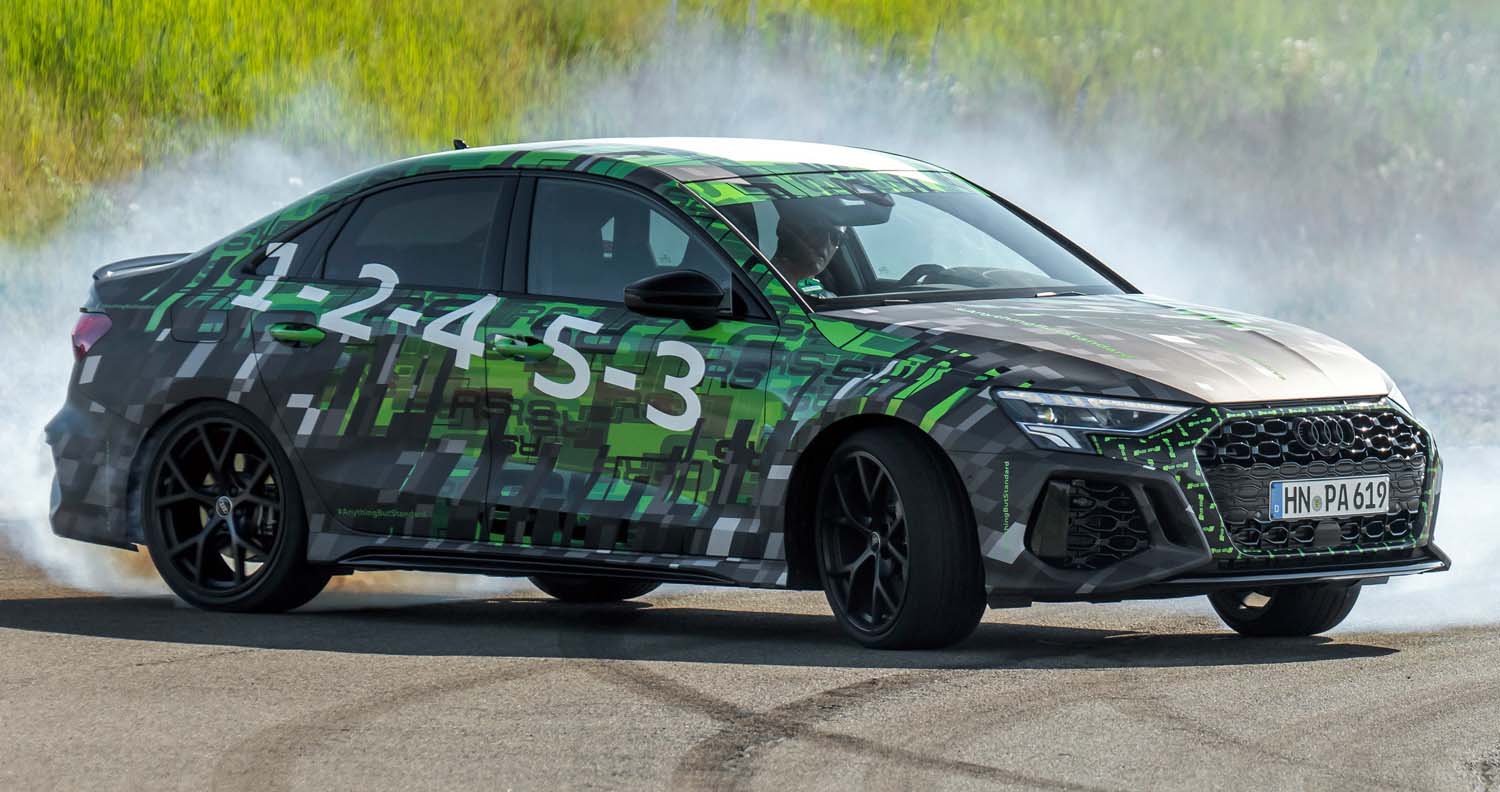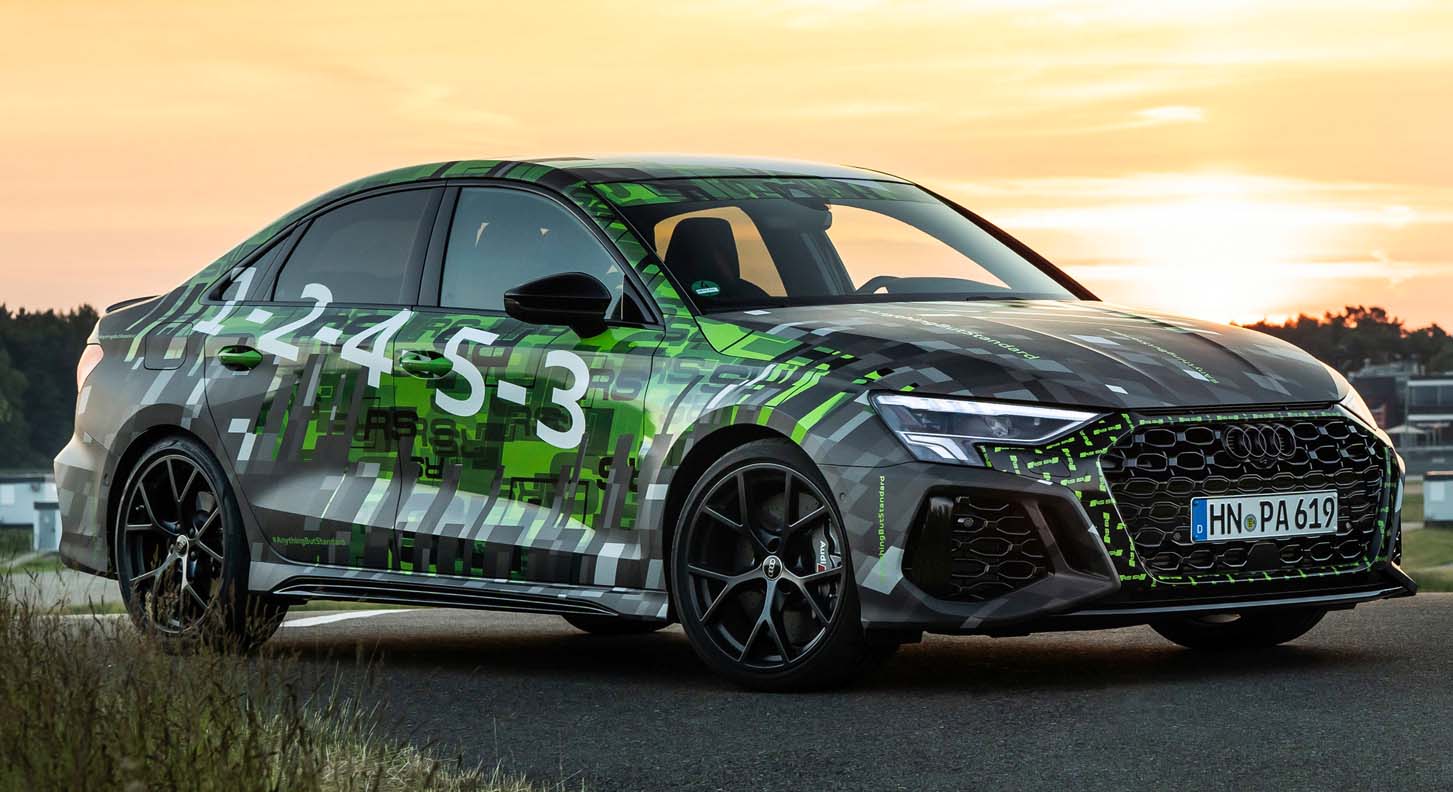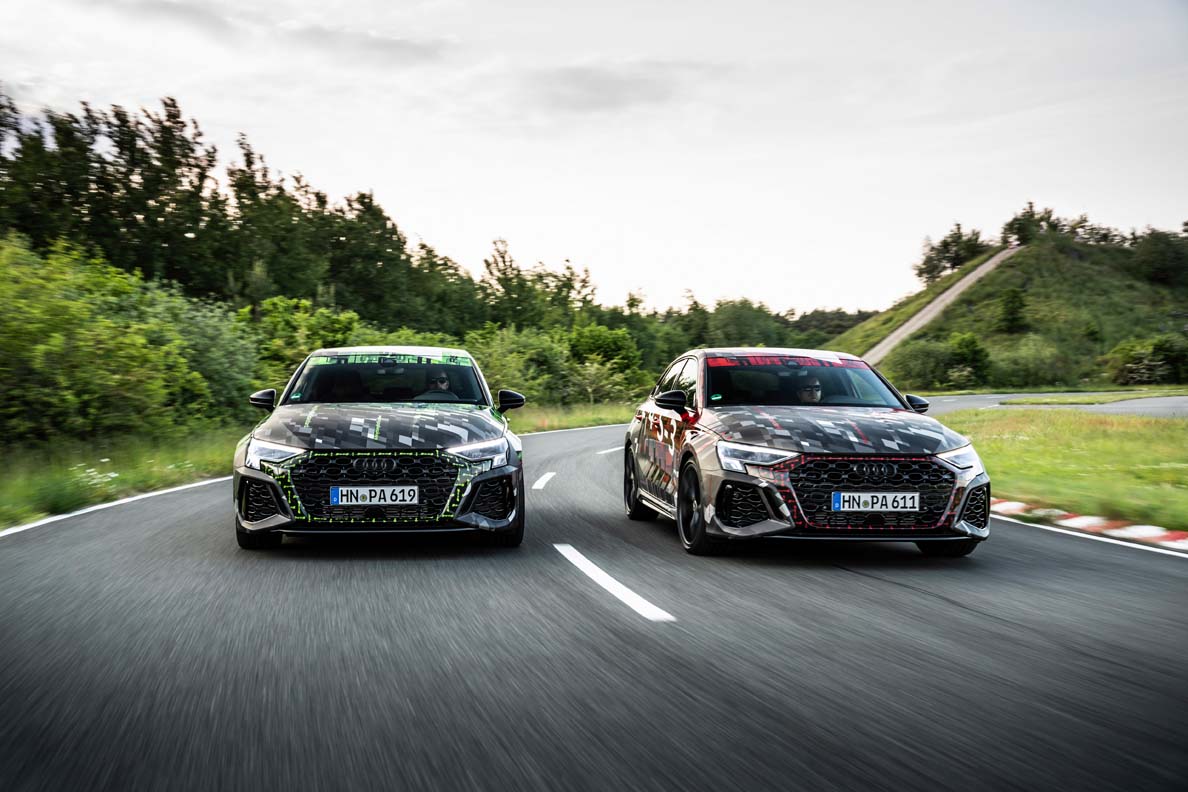
“A quantum leap for agile driving” – that’s what racing and development driver Frank Stippler had to say about the torque splitter with its fully variable torque distribution on the rear axle. Audi will soon launch the first-ever series roll-out of this technology in a sporty compact-class RS model. Frank Stippler and Meic Diessner, development and test engineer for chassis, spoke in an interview about the development and tuning process for the torque splitter in the RS 3 prototype. Both worked together throughout the entire development in various testing and set-up cycles on the North Loop of the Nürburgring to ensure that the new technology meets the wishes of sporty drivers on the racetrack as well as customers looking for comfort in day-to-day driving. That also included two self-contained continual runs of 8,000 kilometers each.
Mr. Diessner, Mr. Stippler, what was the process for you to work together on the development and tuning of the RS torque splitter?
Meic Diessner: Frank is incredibly important to us in this process. He has a lot of experience, especially on the Nürburgring. That makes feedback from him decisive for the tuning and especially for the torque splitter. I’m there on site for the tests and I also drive myself as part of the three-week continual run. I equip the vehicle with measuring technology and compare the data with the feedback we get from Frank so that we can make changes if needed.
Frank Stippler: In addition to my experience and my ability to drive cars fast, my training as an automobile mechanic and my degree in mechanical engineering also help, of course. This allows me to make sense of the feedback from the car immediately so I can pass it on to Meic. At the same time, he understands what I mean when I’m talking about the feedback the car is giving me on the track.
What’s more important: the measurement data or the feedback from the development driver?
Meic Diessner: The data and the impressions from Frank are used equally in tuning the torque splitter. The feedback from a racing driver is very important because he is at the upper limits out on the racetrack. The measurement technology helps me to change certain parameters based on Frank’s descriptions. The one does not work without the other.
What does the torque splitter feel like in the RS 3 prototype? And why was it put in?
Frank Stippler: In general, the car is much more agile in its driving from the middle of the curve to the end and also when accelerating out of the curve. All-wheel drive cars have great tracking stability, but they tend to understeer at the very upper limits. We were looking for a solution that would minimize that behavior. The torque splitter distributes more weight onto the rear axle. With it, the car develops a driving dynamic that oversteers. And that’s where the Audi drive select system comes in, which helps meter that tendency based on use, road conditions and individual preferences. We can get really fast in RS Performance mode, the mode for circuit driving that is designed especially for semi-slick tires. For me, the RS torque splitter is a quantum leap in terms of agile driving.
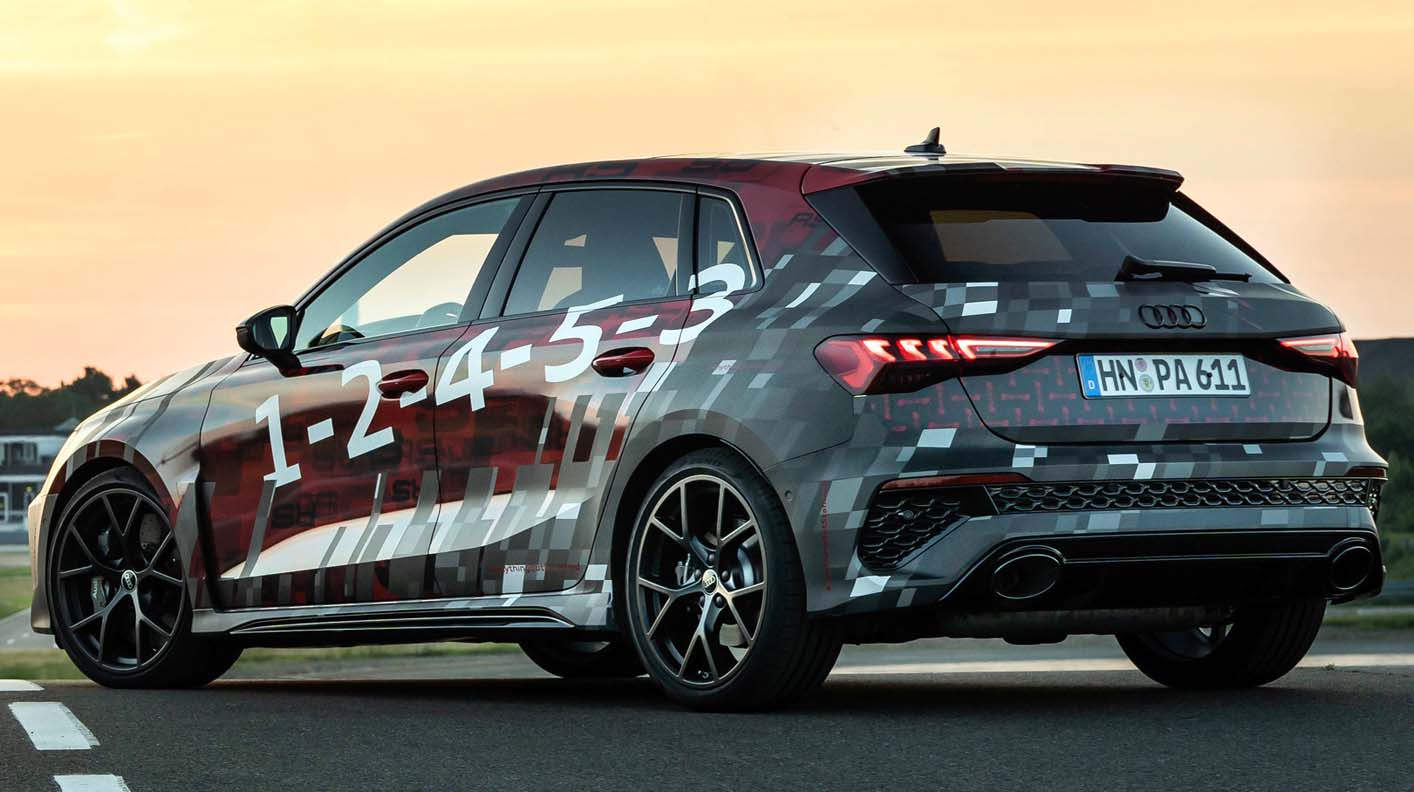
How exactly did Frank Stippler’s findings flow into the tuning?
Meic Diessner: That is of course mostly during the two continual runs of 8,000 kilometers each on the Nürburgring. These extended test runs play an important role during development in practicability – and thus also the serial roll-out of the torque splitter.
Which parameters can still be changed during these tests?
Meic Diessner: In general, the software gets more and more complex during development. This has to be adapted for the available driving modes – from auto to RS Torque Rear, which allows controlled drifting on closed circuits. In practice, that means Frank drives, gives us feedback. We adjust and take turns driving – until it’s just right.
When is it determined to have reached series-production readiness?
Frank Stippler: You develop a sense for that over time. I bring in my opinion, because I’m at the absolute upper limit with the car and have an idea of what customers want from this car. When Meic and I are on the same page after test drives, then that reinforces an overall picture that we have made of the characteristics of the torque splitter. And that has to be consistent for everyone involved in the development. The North Loop testing grounds are especially important in this process. The RS 3 prototype covers a broad spectrum that appeals to sporty drivers. Customers who don’t drive on the racetrack or only do so seldomly are also taken into consideration.
How intelligent is the torque splitter?
Meic Diessner: It recognizes, for example, if the road is wet or dry. So the driver doesn’t have to change the mode. That means that the car automatically reacts differently in RS Performance mode it the road is wet than it would when it is dry. The driver also benefits from the variability of the RS torque splitter all the way to the top speed. So they always have quattro drive when it is needed.
Why is it important in the vehicle tuning not just to be fast?
Frank Stippler: Because we want to understand how the hardware and electronics work together in any possible driving situation. In short, to have an eye on the overall technical image of the vehicle. It’s not about me or about tuning the car to be as fast as possible on the racetrack. To live up to the wishes of customers in terms of dynamics and driving comfort, it probably helps that I don’t just drive fast in a loop, but that I can also classify technical correlations.
What can Audi fans look forward to?
Frank Stippler: A car that covers a broad spectrum:comfortable in city driving and top speeds on the racetrack. A car that is one-of-a-kind in its class and makes hearts beat a little faster.
Meic Diessner: We’re talking about a well-made car with a five-cylinder motor and a great sound that will certainly give you goosebumps. On top of that, a sporty, balanced chassis with the torque splitter, which gives the car lots of variations in combination with the driving modes and that elevates the driving dynamic to a higher level.
